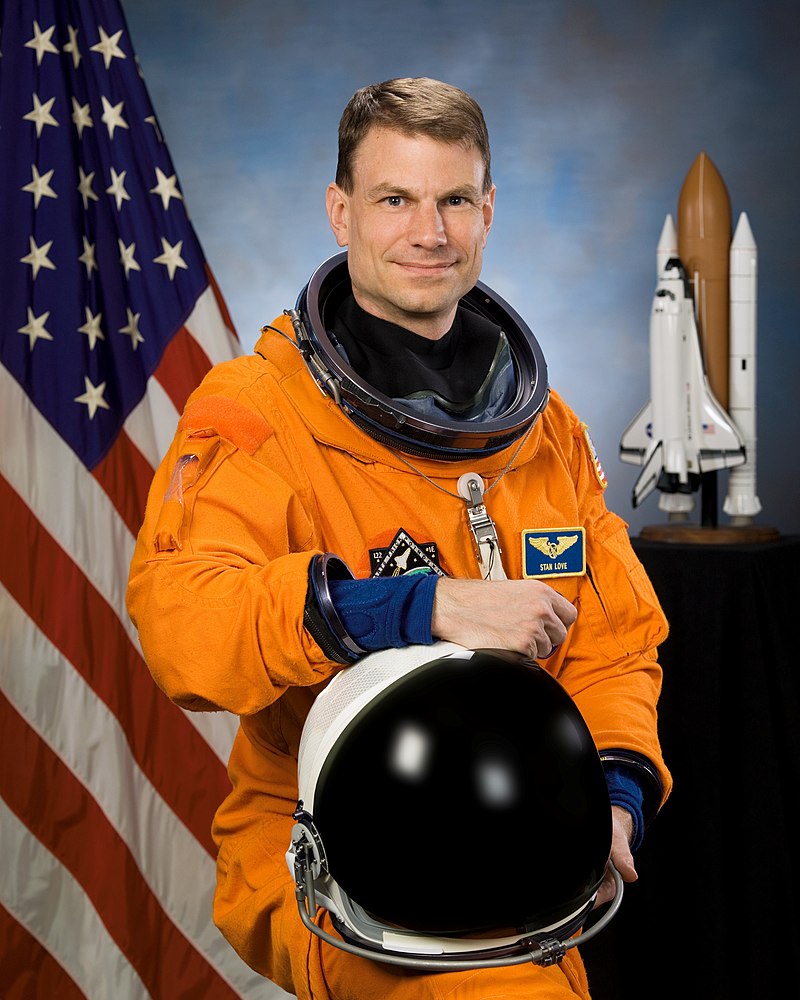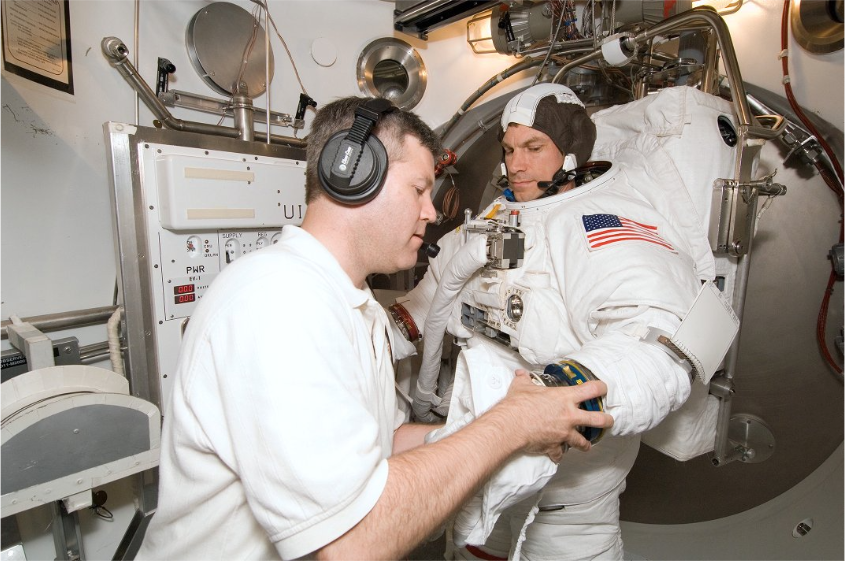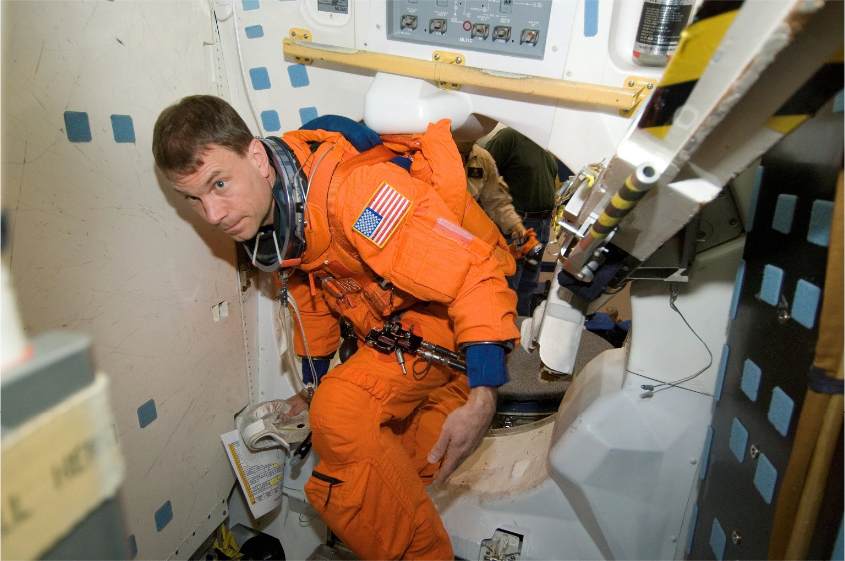Scientist, inventor, and astronaut Stanley G. Love, a native of Eugene, has had a distinguished career at the National Aeronautics and Space Administration. He joined the astronaut corps in 1998 and participated in two spacewalks as part of a mission to the International Space Station in 2008, when he logged over three hundred hours in space. The recipient of the Lyndon B. Johnson Space Center Group Achievement Award and multiple Johnson Space Center Individual Performance Awards, he also developed the gravity tractor method of changing the course of an asteroid to avoid a collision with earth.
Stanley Glen Love was born in San Diego on June 8, 1965, to literary scholar Glen A. Love and biologist and botanist Rhoda M. Love. The family moved later that year to Eugene, where his father joined the English Department faculty at the University of Oregon. Stan Love excelled as a student, graduating from Winston Churchill High School in 1983 and then receiving a bachelor of science degree in physics in 1987 at Harvey Mudd College in Claremont, California. He studied astronomy at the University of Washington, where he received a master of science degree in 1989 and a Ph.D. in 1993. Love married Jancy McFee in 1995; they have two sons.
In 1994, Love moved to the University of Hawaii, where he researched the formation of meteoric chondrules, the collision evolution of asteroids, and the possibility of meteorites from Mercury. The next year, he was awarded the O. K. Earl Prize, a postdoctoral fellowship at the California Institute of Technology, where he investigated space dust particle detections and conducted numerical simulations of asteroid collisions. He joined the Jet Propulsion Laboratory as a staff engineer in 1997 and investigated computer simulations of spacecraft optical systems and laboratory-wide process re-engineering.
Love fulfilled a lifelong ambition in 1998 when NASA selected him to join the astronaut corps. At NASA’s Johnson Space Center in Houston, he received extensive training in Space Shuttle and International Space Station systems and operations, including over twelve hundred hours of aviation time that qualified him as a co-pilot for rendezvous and docking of the shuttle with another orbiting spacecraft. In his first technical assignment, he served the Astronaut Office as a representative to the Environmental Control and Life Support Systems engineering group, preparing the first crews on the International Space Station.
Beginning in 2000, Love served as capsule communicator (CAPCOM) in the Mission Control Center for numerous International Space Station expeditions and three shuttle missions. He flew on STS-122 aboard the space shuttle Atlantis in 2008 to deliver and install the European Space Agency’s Columbus Module. While at the station, he performed two Extra Vehicular Activities (spacewalks), totaling fifteen hours, to add two science payloads to the outside of the station. "Working outside an orbiting spacecraft is an intense experience,” Love said. “Your main concerns are to stay safe and to complete your assigned tasks. But now and then you have a moment to look around and see the blackness of space and the beautiful blue Earth rolling by underneath you. Those moments stay with you the rest of your life."
Following his space flight, Love was assigned to the Deep Worker 200 submersible, a small submarine used as a stand-in for the Space Exploration Vehicle, and served on the Space Launch System Program team that planned the human exploration of asteroids, the Moon, and Mars. He returned to Hawaii as the science communicator for the BASALT research project, a Mars-analog scientific exploration at the Kilauea volcano.
In his more recent work for NASA, Love developed tools for collecting meteorite samples in micro gravity and was part of two six-week Antarctic expeditions to hunt for small meteorites. He is also the co-inventor of the gravity-tractor concept of modifying asteroid trajectories by using the gravitational attraction of a spacecraft flown in the asteroid’s vicinity and has a pending patent on a novel spacecraft control system.
Since 2019, Love has been the deputy chief of the Astronaut Office’s Rapid Prototyping Laboratory, where he develops cockpit displays and controls for Orion. He lives in Houston.
-
![]()
Stanley Glen Love.
Courtesy NASA -
![]()
Stanley Glen Love, Johnson Space Center, July 2007.
Courtesy NASA -
![]()
Stanley Glen Love during a shuttle training center.
Courtesy NASA
Related Entries
-
![Eugene]()
Eugene
Eugene is a metropolitan center at the head of the Willamette Valley, a…
-
![Hole in the Ground]()
Hole in the Ground
Hole in the Ground is a spectacular bowl-shaped volcanic crater located…
Map This on the Oregon History WayFinder
The Oregon History Wayfinder is an interactive map that identifies significant places, people, and events in Oregon history.





